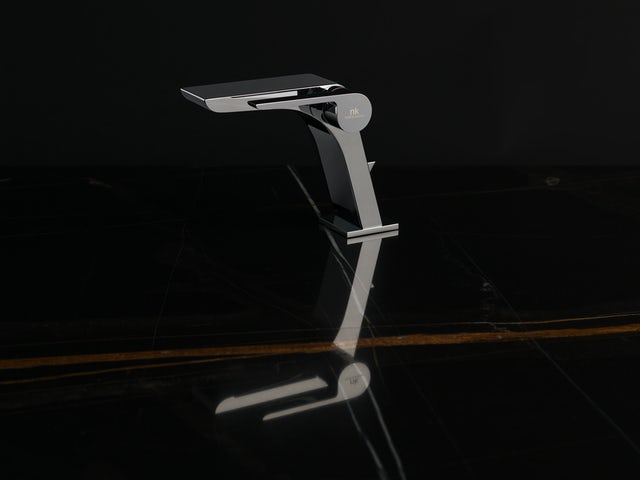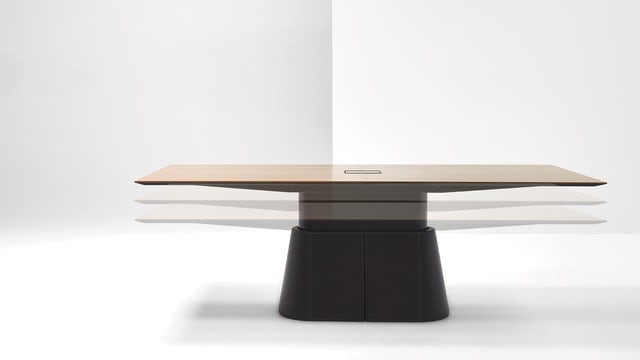Architizer's A+Product Awards is open for submissions, with the Extended Entry Deadline fast approaching on Friday, February 23rd. Get your products in front of the AEC industry’s most renowned designers by submitting today.
Pellegrino Turri is an Italian inventor from the early 19th century who is credited with imagining and building one of the first versions of the typewriter. The invention was inspired by a long-time friend, Countess Carolina Fantoni da Fivizzano, who was blind. At a time when the only means of long-distance communication was via letter, a blind or partially sighted person would be required to dictate their personal thoughts to a transcriber. Turri invented the typewriter to give his friend privacy and freedom.
Innovation is born from necessity, that we know. We can all agree that a problem is a catalyst for a solution. If we are being honest, since Universal Design (sometimes called UD) has not been a priority of the majority, the accessible design industry has a lot of deeply rooted problems that are desperate to be solved.
Officially called Universal Design, accessible design refers to the design of buildings, products and environments accessible to everyone, regardless of age or ability. Other terms include “barrier-free” and “inclusive,” For the most part, they are used interchangeably. Essentially it is thoughtful design, design that considers all users and their ability to interact with a space, platform or object. In recent times, as designers have begun to understand the vast and ever-growing demand for accessible living, the concept has evolved from a practical matter to a thriving industry of innovation and great design.

OXO by Noken Porcelanosa Bathrooms| Finalist, 2021 A+Product Awards, Kitchen & Bath, Fixtures & Fittings
The Americans With Disabilities Act was established over 30 years ago, and with it, a long list of accessibility guidelines to protect the rights of people with disabilities aimed a creating a more inclusive society. Those standard design requirements for public, commercial and government facilities were a critical step for the ADA, ensuring elements such as wheelchair lifts, curb ramps and handrails became convention. From that point on, the market for accessible and inclusive design erupted, blessing us with some fantastic products that are not only incredible designs but that also change people’s lives for the better.
Architizer is committed to championing great design, and with the A+Product Awards, we see that the world is full of innovators who deserve recognition for the work they do. We want to give them the platform to change the world. Voted for by a renowned Jury consisting of some of the world’s best architects and design firms to the open Pubic Vote, the A+Product Awards puts your product in front of tens of thousands of architects and designers that make up Architizer’s engaged community. Entering the A+Product Awards helps get your design recognized.
Noken by Pocelanosa has championed accessible and sustainable design for years, committing to making its products universal without compromising on beautiful design. The OXO tap is a perfect blend of futuristic, sustainable design. The sleek design incorporates a lever handle, shorter spout and reduced water consumption — a fully inclusive and expertly designed piece of bathroom furniture.

LCS Table by Nienkamper | Finalist, 2021 A+Product Awards, Furnishings, Contract Furniture
Adaptable design is becoming increasingly popular as a way to further augment our ever-transformative lifestyles. The ability to shift and change our environments to suit how we wish to live day by day is a luxury rapidly becoming a commonplace design requirement. However, adaptable design has also been one of the critical strategies in Universal Design: how to make something usable for people of all abilities while ensuring both users have the same experience. LCS Table is a product of that initial Universal Design strategy. By making their beautifully designed conference table height adjustable, the design becomes adaptable and, in turn, inclusive for all users.

Single-track insulated Vitrocsa invisible frame by Vitrocsa | Winner, 2021 A+Product Awards, Openings, Doors & Hardware
Thoughtful and inclusive design can improve lives, while poor design can dramatically hinder lives. For example, a typical UPVC patio door threshold can make the difference between a wheelchair user or a user with limited mobility being able to go outside. High thresholds and transitional barriers can be a tremendous problem for many people, which is why the Invisible Frame sliding door solution from Vitrocsa is a revelation. Flush to the ground the recessed sliding components remove impediments from the threshold, allowing a smooth transition from one area to the next, including outdoors.
Designing with accessibility in mind forces us to engage with and better understand our users. Universal Design practices make us think in new ways. Therefore it is no surprise that accessibility is of benefit to all users — there’s a reason they call it “universal.” Doors that open automatically for wheelchair users benefit anyone with their hands full. Closed captions on videos are essential for users who are deaf, yet the feature is also useful and popular amongst all kinds of users. Recently had a baby? Dropped curbs aren’t just useful for wheelchair users; every parent benefits from these simple, considerate changes to our environment. With more innovations on the horizon, an inclusive and fairer future seems not only possible but the answer to many long-standing design problems.
Architizer's A+Product Awards is open for submissions, with the Extended Entry Deadline fast approaching on Friday, February 23rd. Get your products in front of the AEC industry’s most renowned designers by submitting today.









